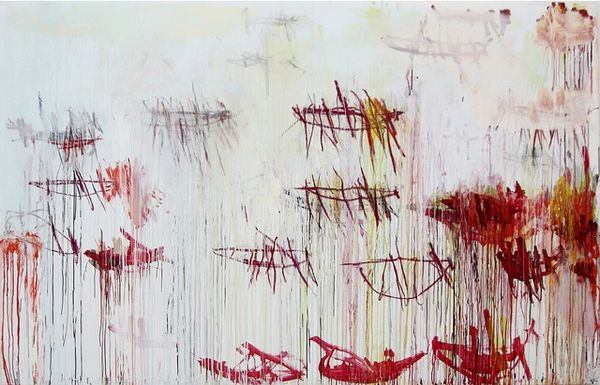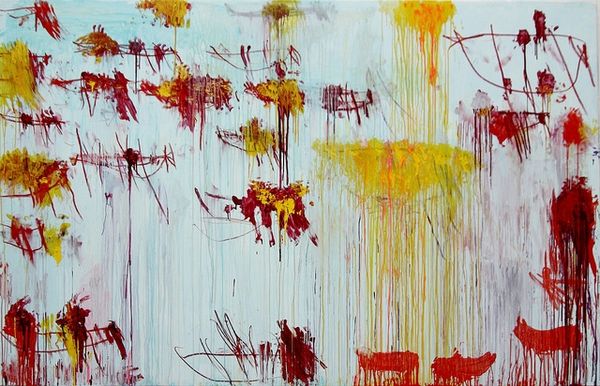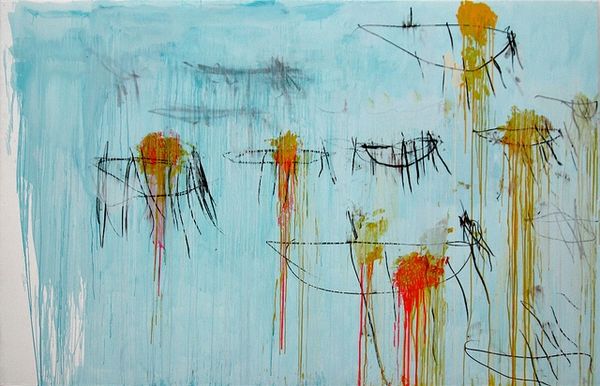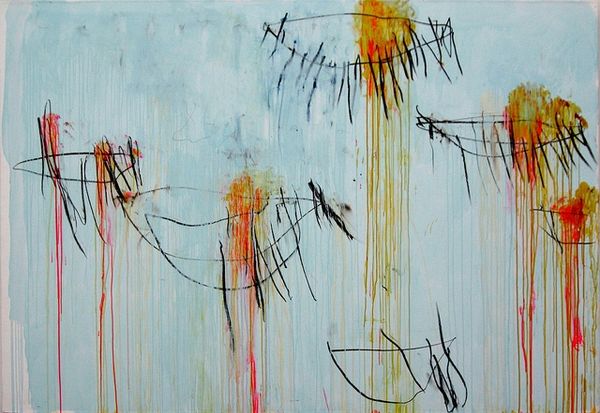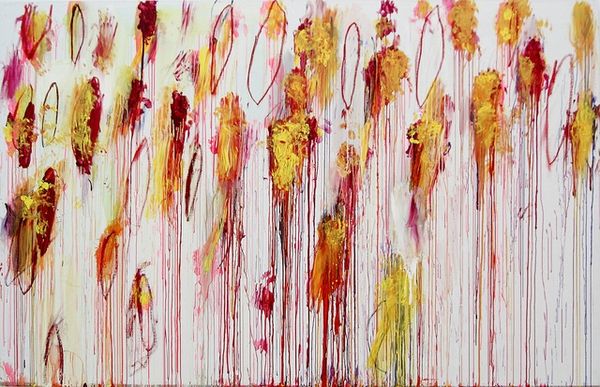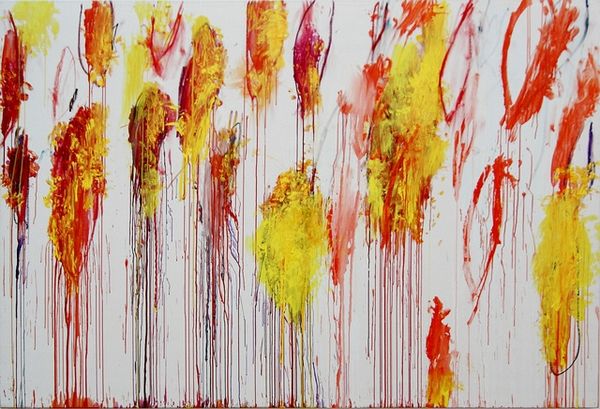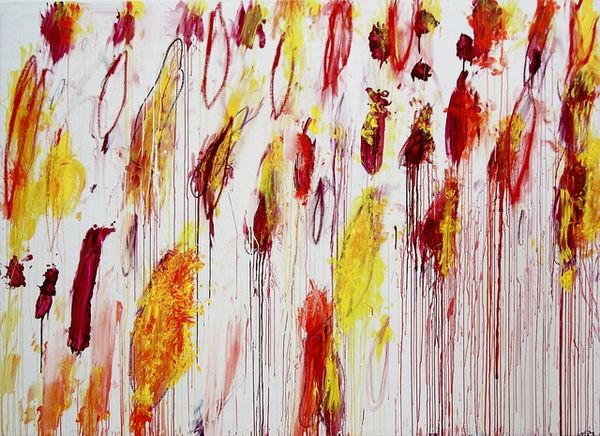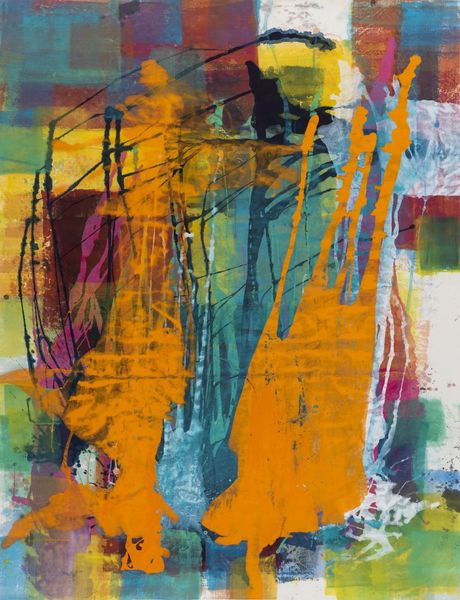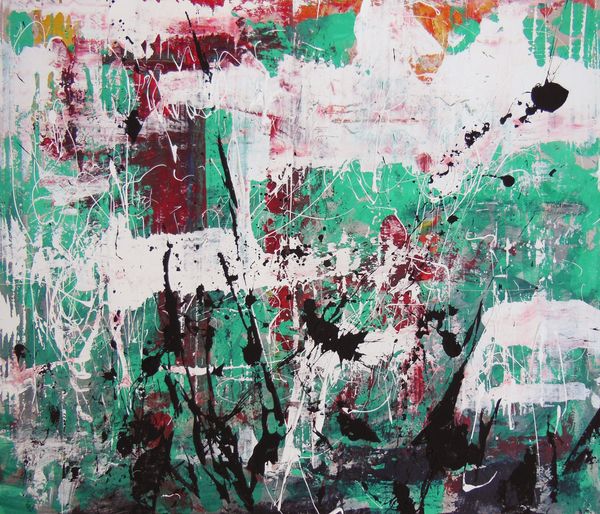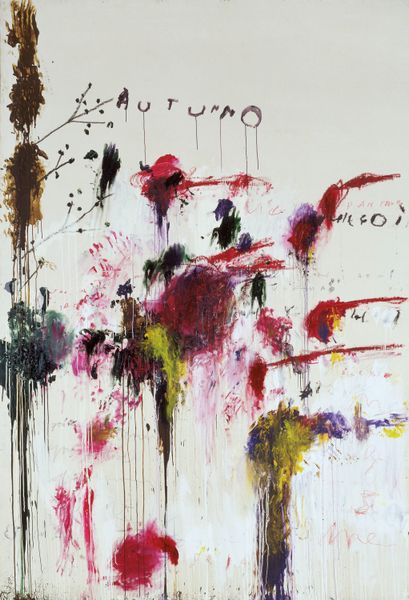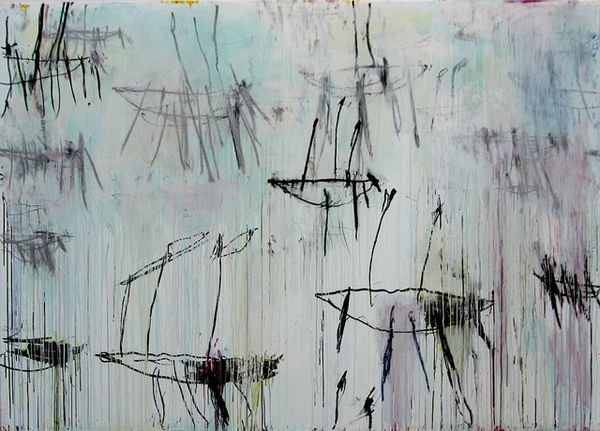
#
black-mountain-college
Dimensions: 211.5 x 304.2 cm
Copyright: Cy Twombly,Fair Use
Curator: What strikes me immediately is the dynamism, that feeling of movement and perhaps even decay—it’s quite visceral. Editor: And I suppose this stems, in part, from understanding the painting within a broader context. The mixed-media piece we're observing, titled "Lepanto, Part VI," was executed by Cy Twombly in 2001. Thinking about historical events like the Battle of Lepanto provides a key into the artist's emotional and socio-political thinking. Curator: So, you see these dripping lines and fragmented shapes as directly referencing a historical battle? I see the trauma, yes, but the beauty seems to come first. How might gender or power intersect with this violence? It alludes to conflict but feels decidedly abstracted, emotional, a visual poem rather than a precise record. Editor: I think it’s reductive to not discuss power, or historical imperialism, when engaging in contemporary analysis, particularly where an artist engages with subject matter which had vast power relation consequences, such as the aforementioned historical conflict. Museums as spaces bear the duty to not strip that complex social fabric away in our engagements. How do we account for these power imbalances and colonial inheritances when consuming this piece? What positionality and cultural power dynamic are at play? The color feels deliberate – that heavy scarlet. But tell me, do you not read the cross-hatched areas almost like ledger entries? They might speak to the counting and management of human life so necessary in these scenarios, which are rooted in colonial ambition. Curator: That is a powerful read, and one that reminds me that art’s meanings are constructed rather than delivered, contingent on our social perspectives. The scarlet bleeds with passion. In this mixed-media and acrylic work, he conjures form out of chaos, I would lean less heavily on the precise historical event in interpreting the emotion here and draw on larger thematic threads concerning militarism. Editor: I appreciate your point on emotion. Looking at how "Lepanto, Part VI" fits into his entire body of work is relevant when interpreting militaristic concepts, given that other works focus on less destructive symbolism to speak to it. That being said, while appreciating Twombly's aesthetics and technique is vital, his engagement with conflict still invites interpretations on themes of power and the social issues connected with historic events of large impact. Curator: A really salient observation. Art lives in relation to us and to our now. Editor: Precisely, a perfect note to close on.
Comments
No comments
Be the first to comment and join the conversation on the ultimate creative platform.
